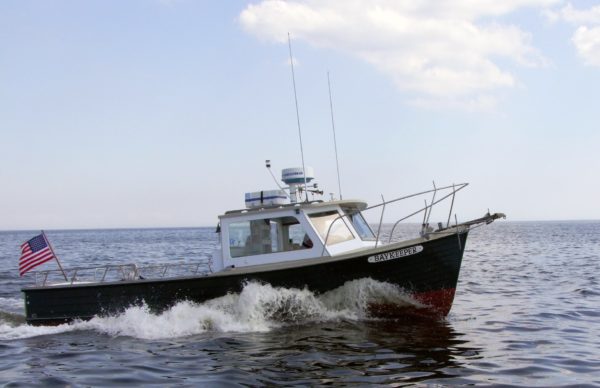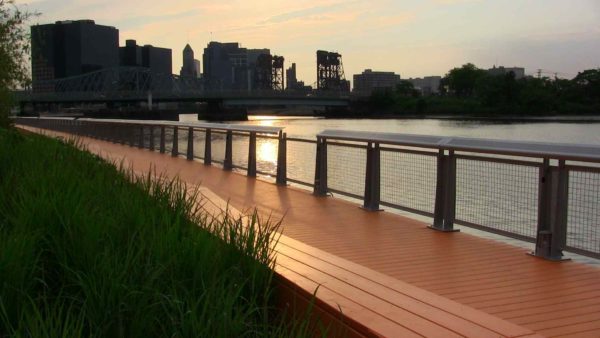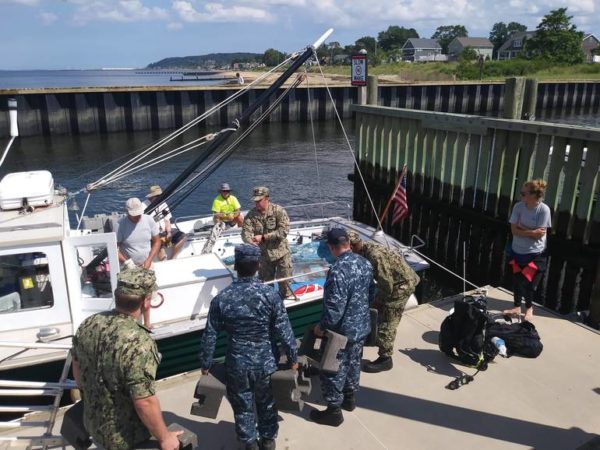About Us Overview
Our Mission
The mission of NY/NJ Baykeeper is to protect, preserve and restore the ecological integrity and productivity of the NY-NJ Harbor Estuary.
Founded with the help of Hudson Riverkeeper and the American Littoral Society in 1989, NY/NJ Baykeeper is a wholly independent nonprofit with its own 501c3. NY/NJ Baykeeper has a full and part time staff, its own Board of Directors and many dedicated volunteers.
Our Approach
Through our Estuary-wide programs we seek to end pollution, improve public access, conserve and restore public lands, restore aquatic habitats, encourage appropriate and discourage inappropriate development, carry out public education, and work with federal and NY/NJ state regulators and citizen groups as partners in planning for a sustainable future for the NY-NJ Harbor Estuary watershed.

NY/NJ Baykeeper fights to protect the health of our local waterways through our advocacy campaigns, legal actions and boat programs. We shape and enforce water quality, land use, and coastal policies that impact the estuary and actively patrol the waterways to identify and stop polluters.

Through land acquisition and stewardship, NY/NJ Baykeeper’s conservation program has helped preserved more than 3,000 thousand acres of open space in the NY-NJ Harbor Estuary. The Raritan Riverkeeper program focuses specifically on preserving the health of the Raritan River.

NY/NJ Baykeeper’s restoration work focuses on repopulating the New York and New Jersey bays with oysters and creating sustainable habitat in order to monitor and improve the health of the estuary’s eco-system.
Our Goals & Objectives
NY/NJ Baykeeper’s goal is to protect, preserve, and restore the NY-NJ Harbor Estuary’s environment for the good of our natural and human communities. Over the next ten years we plan to achieve the following objectives:
- The Newark Bay Complex – Includes the Hackensack Meadowlands, Newark Bay the Arthur Kill and Kill Van Kull. A vast urban wildlife refuge will be established there, conserving a prime habitat for birds and fish, and becoming a cherished ecotourism destination for the region’s citizens. Preserving the 8,000 acres of the Hackensack Meadowlands is a first step in this process.
- Jamaica Bay – New York’s urban wilderness is losing wetlands to nitrogen pollution, urban runoff, combined sewer overflows, and sea level rise. Ecologically integrated eco-system restoration projects – incorporating oyster, eel grass, and wetlands restoration–will be implemented, saving habitat for wildlife and quality of life for those living around and visiting the Bay.
- Priority natural habitat will be preserved and restored – Key Estuary lands and waters will be protected for the ultimate good of wildlife and communities. Citizen volunteers will play active leadership roles in this stewardship.
- Oysters will thrive from Sandy Hook to the Tappan Zee – Our waters will become cleaner so that someday soon oysters can again be proudly served on New York City and New Jersey restaurant tables.
- Fences will come down, and pollution cleaned up – The Estuary will become available to everyone for walking, swimming, boating and fishing along all of its 750-mile shoreline.
- Agencies will aggressively prosecute polluters, seeking remuneration for damages – Baykeeper believes that in order to restore the Estuary, polluters must pay for the harm they’ve done to public trust resources. The resulting clean waters will nourish fish, shellfish, bird life and the Estuary’s people.
- Great river-centered greenways and waterfront parks will unify communities and support habitat – The haphazard, poorly planned, special interest-driven, urban sprawl and waterfront gentrification that has divided communities and harmed habitat in the past will be replaced by cooperative community efforts that feature thriving ecosystems as the centerpiece of sustainable green redevelopment.
- Urban communities will be revitalized – Cities and towns will be revitalized economically and spiritually through their renewed awareness of our integral place in nature, and through the cooperative efforts of empowered citizens, communities, business and government. We will enrich human and natural communities with programs that promote green development and green jobs.
- An empowered people will recognize their place as stewards of the Hudson-Raritan Estuary – We will see that the New York, Newark, Raritan and Jamaica Bays; the Lower Hudson, Hackensack, Passaic, Rahway, Raritan, Shrewsbury and Navesink rivers; and the entire Estuary watershed, are part of a single bio-region in which there is no separation between states, counties and towns.
Our Successes Are Made Possible Through the Generous Support of Our Funders
The Geraldine R. Dodge Foundation
New Jersey Department of Environmental Protection
Environmental Endowment for New Jersey
Johanette Wallerstein Institute
Mushette Family Foundation Inc.
United States Environmental Protection Agency

NY/NJ Baykeeper is a proud member of Waterkeeper Alliance.
Request a Speaker
Whenever feasible, NY/NJ Baykeeper staff members are available to speak at your event or program on a variety of topics related to the NY-NJ Harbor Estuary, including our work at NY/NJ Baykeeper, water quality, land conservation, oyster restoration, public access, the lower Passaic River and other topics. Please be sure to indicate your topic(s) of interest and proposed date(s). Please email your inquiry to the address below:
[email protected]
-
1222 Route 36 Suite #4
Hazlet, NJ 07730 - 1.732.888.9870
- [email protected]
-
